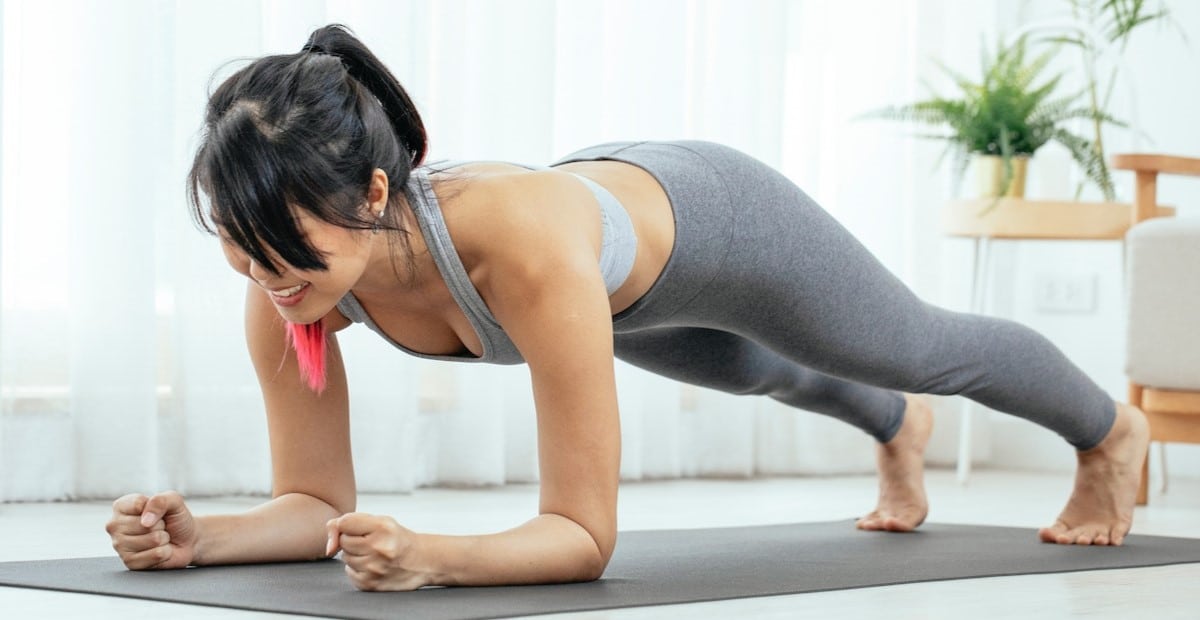
Contents
Using the classic plank position and ignoring plank variations to focus on proper form
The plank is a classic for a reason. It’ low cost (relative to space and equipment, that is) and it’s highly accessible positioning make it a friendly one amongst trainers. But what is it really doing, other than testing endurance and durability?
The perfect plank is targeting a good few places (which we’ll get into), but in actual fact, the plank is far better for solely core muscles targeting. Sure, you need to keep your core tight and your abdominal muscles prioritised, but the plank is doing a little more than we might expect here.
In any case, you’re here because you want to learn about the plank. Proper form isn’t always hard to nail, so let’s learn of the neutral position, straight-line posture, forearm plank habits, and how your shoulder blades should sit all so we can learn how to plank correctly today.
Let’s walk the plank!
Why bother?
Whether you use an exercise mat, a side plank or simply use it for more form tips, the plank is a brilliant exercise. The movement helps to strengthen your glutes (butt!), shoulders and arms too. Planks work in more ways than expected, hence why a large portion of muscle groups are actually needed beyond your core strength.
As far as core strength is concerned, balance and endurance in most athletic movements are bolstered by core strength training. So, let’s take a look at how you could perform the plank and avoid these common plank mistakes.
This instruction is taken from our good friends Greatist–
1. Plant hands directly under shoulders (slightly wider than shoulder width) like you’re about to do a push-up.
2. Ground toes into the floor and squeeze glutes to stabilize your body. Your legs should be working, too – be careful not to lock or hyperextend your knees.
3. Neutralize your neck and spine by looking at a spot on the floor about a foot beyond your hands. Your head should be in line with your back.
4. Hold the position for 20 seconds. As you get more comfortable with the move, hold your plank for as long as possible without compromising your form or breath.


Conclusion
So, in short, make sure your hands are directly under your shoulders, plant your toes into the floor (pin-pointed) and don’t let your head drop beyond that.
You can add challenge to this exercise by keeping your leg stacked on top of the other, removing a more stable centralised balance stance and adding pressure to your upper body and core.
Remember, while your whole body doesn’t benefit, a lot of it does, so be sure to keep this exercise in mind… despite the pain that comes with it!
Endure the routine, nail the form and build your strength up with this easy-to-execute exercise.
FAQs
Is there such a thing as the perfect form?
In reality, form will vary depending upon the trainer, but at the end of the day, there is an ideal form for most movements. Try your hardest to reach it.